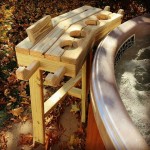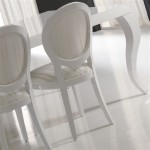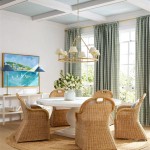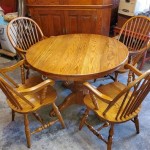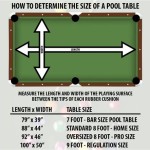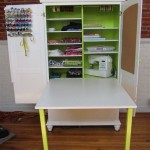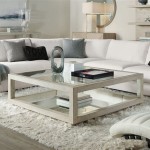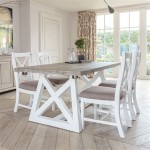Coffee Table Base Considerations for Marble Tops
The selection of a coffee table base to support a marble top requires careful consideration of several factors. Marble, a metamorphic rock prized for its beauty and durability, is also characterized by its significant weight. Therefore, the base must provide adequate structural support, stability, and a complementary aesthetic. This article outlines key points to contemplate when choosing a coffee table base for a marble top, covering material selection, design considerations, and stability analysis.
Material Selection for Marble Coffee Table Bases
The material chosen for the coffee table base plays a crucial role in its ability to support the weight of the marble top and contribute to the table's overall style. Common materials include metal, wood, and stone, each offering distinct advantages and disadvantages.
Metal Bases: Metal, particularly steel and wrought iron, are popular choices due to their high strength-to-weight ratio and versatility in design. Steel provides exceptional load-bearing capacity, making it suitable for supporting heavy marble tops. It can be fabricated into various shapes, from minimalist geometric designs to more elaborate, ornate structures. Steel bases are often powder-coated or painted to enhance their durability and resistance to corrosion.
Wrought iron offers a classic, decorative aesthetic and can be custom-forged into intricate patterns. However, wrought iron can be heavier than steel and may require regular maintenance to prevent rust. Aluminum, while lighter than steel, is generally less suitable for supporting very heavy marble tops due to its lower strength.
Considerations for metal bases include the thickness of the metal, welding quality (if applicable), and the type of finish. Thicker metal and high-quality welds contribute to greater strength and stability. A durable finish protects the metal from environmental factors and enhances its appearance.
Wood Bases: Wood offers a warm, natural aesthetic and can be a suitable choice for supporting marble tops, provided that the wood is sufficiently strong and well-constructed. Hardwoods such as oak, maple, and walnut are preferred due to their density and resistance to warping. Softwoods like pine are generally less suitable unless the base is carefully designed and adequately reinforced.
The design of a wooden base for a marble top often incorporates structural supports, such as aprons and stretchers, to distribute the weight evenly and prevent sagging. The joinery used in the construction of the base is also critical. Dovetail joints, mortise and tenon joints, and other robust joinery methods ensure that the base can withstand the stresses imposed by the marble top.
A protective finish, such as varnish or lacquer, is essential to protect the wood from moisture and scratches. Additionally, the wood should be properly seasoned and dried to minimize the risk of warping or cracking over time.
Stone Bases: Stone, such as concrete or even different types of marble or granite, presents a visually harmonious and substantial option for a coffee table base. Concrete bases can be molded into various shapes and offer a modern, industrial aesthetic. The concrete must be reinforced with steel rebar to increase its tensile strength and prevent cracking. Sealing the concrete is crucial to prevent staining and moisture absorption.
Using a different type of marble or granite for the base can create a cohesive and luxurious look. However, it is essential to ensure that the base stone is strong enough to support the top stone. The base stone should also be sealed and polished to match the finish of the marble top.
Design and Stability Considerations
Beyond material selection, the design of the coffee table base significantly affects its stability and aesthetic appeal. The base must be designed to distribute the weight of the marble top evenly and prevent tipping or wobbling. Furthermore, the design should complement the style of the marble top and the surrounding decor.
Base Footprint and Distribution of Weight: The footprint of the base refers to the area of the floor that the base occupies. A larger footprint generally provides greater stability, particularly for heavy marble tops. The weight of the marble top should be distributed evenly across the base to prevent localized stress concentrations. For example, a four-legged base should have each leg positioned to support an equal portion of the weight.
Consider the shape of the marble top when designing the base. Round marble tops often require a circular or pedestal base for optimal stability. Rectangular or square marble tops can be supported by a variety of base designs, including four-legged bases, trestle bases, and solid plinth bases.
Height and Proportion: The height of the coffee table base should be proportional to the size of the marble top and the height of the surrounding furniture. The generally accepted height range for a coffee table is between 16 and 18 inches, but this can vary depending on personal preference and the design of the seating area. The proportion of the base to the top should also be visually pleasing. A base that is too small may appear flimsy and unstable, while a base that is too large may overwhelm the marble top.
Style and Aesthetic: The coffee table base should complement the style of the marble top and the overall decor of the room. A minimalist metal base can be paired with a sleek Carrara marble top for a modern look. A wooden base with intricate carvings can be combined with a richly veined marble top for a more traditional aesthetic. The color and finish of the base should also coordinate with the marble top and the surrounding furniture.
Consider the edge profile of the marble top when selecting a base. A sharp, angular edge may be best complemented by a clean, contemporary base, while a rounded edge may pair well with a more ornate or traditional base.
Attachment Mechanisms: The method used to attach the marble top to the base is crucial for ensuring stability and preventing accidental dislodgement. Several options are available, each with its own advantages and disadvantages. Some common methods include:
*Screws and Inserts: This method involves drilling holes into the underside of the marble top and inserting threaded inserts. Screws are then used to attach the base to the inserts. This method provides a secure and relatively easy attachment. However, drilling into marble requires specialized tools and care to avoid cracking the stone.
*Adhesive Bonding: Industrial-strength adhesives can be used to bond the marble top to the base. This method is relatively simple but relies on the strength and durability of the adhesive. It is essential to use an adhesive that is specifically designed for bonding stone to the base material. Surface preparation is crucial for achieving a strong and lasting bond.
*Support Brackets and Clips: Metal brackets or clips can be attached to the base and used to hold the marble top in place. This method provides a mechanical means of support without requiring drilling or adhesive bonding. The brackets should be designed to distribute the weight of the marble top evenly and prevent movement.
*Gravity and Friction Fit: In some cases, the weight of the marble top alone can be sufficient to hold it in place, particularly if the base is designed with a recessed area or lip to prevent movement. This method is the simplest but may not be suitable for all marble tops, particularly those that are small or lightweight.
Ensuring Stability and Safety
The ultimate goal in selecting a coffee table base for a marble top is to ensure stability and safety. A stable coffee table will not tip over easily and will provide a safe surface for placing objects. Several steps can be taken to enhance the stability of the table.
Weight Distribution Analysis: Before finalizing the design, it is prudent to perform a weight distribution analysis to ensure that the base can adequately support the marble top. This analysis involves calculating the total weight of the marble top and determining how that weight is distributed across the base. Finite element analysis (FEA) software can be used to simulate the stresses and strains on the base under load.
Testing and Prototyping: If possible, it is advisable to build a prototype of the coffee table and test its stability before committing to the final design. This can involve placing weights on the marble top and observing how the base responds. The table should be tested on various surfaces, including carpet and hard flooring.
Leveling Feet and Adjustable Glides: Installing leveling feet or adjustable glides on the base can help to compensate for uneven flooring and prevent wobbling. These devices allow the height of each leg to be adjusted independently, ensuring that the table sits perfectly level.
Floor Protection: Consider using felt pads or other protective materials under the base to prevent scratching or damage to the flooring. This is particularly important for heavy marble tables, which can exert significant pressure on the floor.
Compliance with Safety Standards: Ensure that the coffee table base complies with relevant safety standards and regulations. This may involve testing the table for stability and load-bearing capacity. Check for sharp edges or other potential hazards that could cause injury.
By carefully considering these points – material selection, design factors, and stability measures – individuals can select and construct a coffee table base that provides lasting support, aesthetic appeal, and safety for a cherished marble top.

Wide Top Coffee Table Base End Marble Granite Live Edge Etsy

Diy Marble Coffee Table The Striped House Tables Design

Buy Chelsea Marble Top Coffee Table Gold Base Tables Fancy Homes

Fanned Base Round Coffee Table 40 West Elm

Mieres Black 2 Tier Rectangle Coffee Table Base And White Faux Marble Top For Living Room Double Metal Leg Design Wyzw368351481 The Home

Temple Webster Anika Mango Wood Marble Coffee Table

Buy Alaia Marble Top Coffee Table Gold Base Tables Fancy Homes

Lotus Hand Carved Oval Marble Coffee Table Glass Top By Stephanie Odegard Sr Hughes

Luxury Arabescato White Dark Emperador Marble Top Sphere Ball Table Base Sitting Living Room Tea Coffee For Villa Home Furniture Design Dining Made In Com

Mieres Black 2 Tier Rectangle Coffee Table Base And White Faux Marble Top For Living Room Double Metal Leg Design Wyzw368351481 The Home

